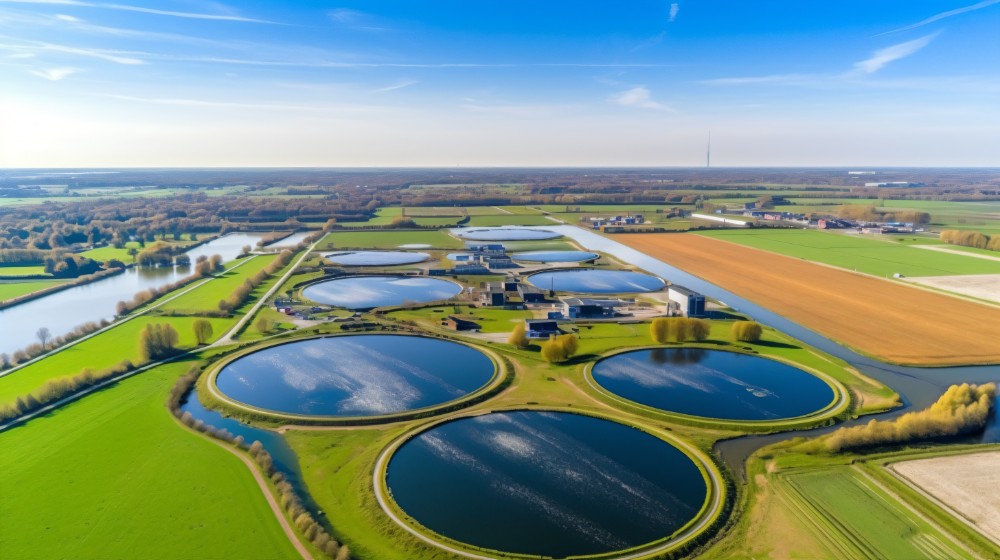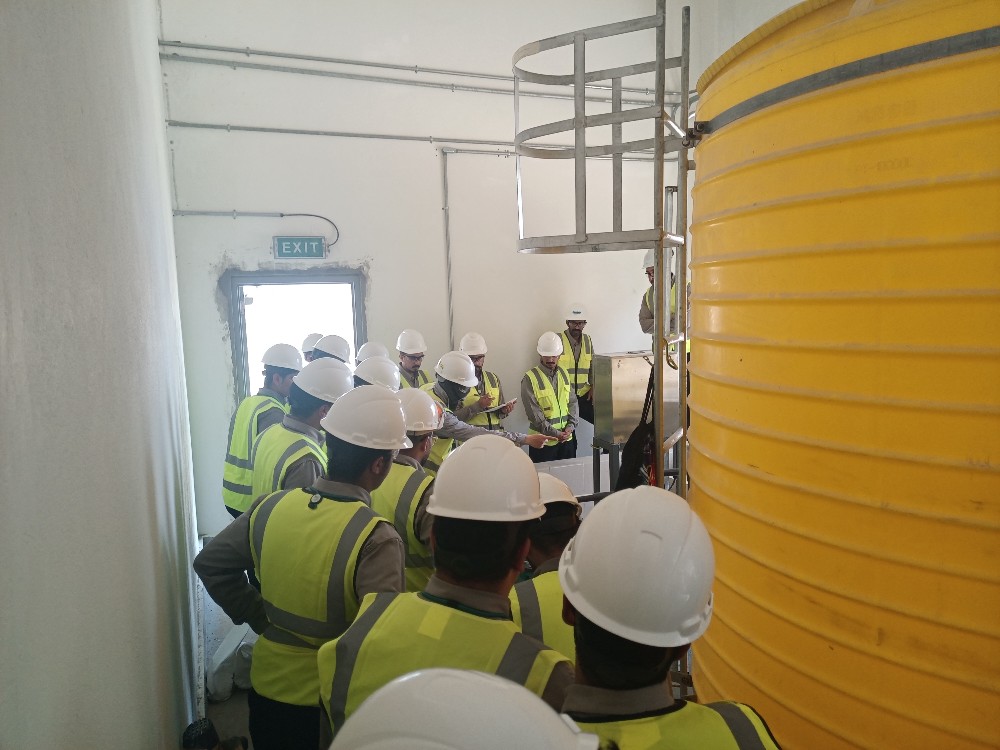Sodium Hypochlorite Generator for On-site Use
Introduction: A Game-Changer in Water Treatment
We live in a time where clean, safe water is more important than ever. But how do you ensure that your water disinfection system is both efficient and environmentally friendly?
Enter the Sodium Hypochlorite Generator for On-Site Use. In this article, we’ll dive into the world of on-site sodium hypochlorite generation and why it's making waves in water treatment systems worldwide.
We’ll also show you why switching to an on-site hypochlorite generator is the best decision for your business, whether you’re treating drinking water, wastewater, or industrial systems.
1. What is a Sodium Hypochlorite Generator?
Simply put, a Sodium Hypochlorite Generator is a device that produces a chlorine-based disinfectant (sodium hypochlorite) on demand, right at your facility.
Instead of relying on purchasing, storing, and handling commercial bleach, these systems allow you to generate the solution as needed.

2. How On-Site Sodium Hypochlorite Generation Works
You might wonder how these machines transform basic elements into powerful disinfectants. On-site sodium hypochlorite generation systems use salt, water, and electricity through a process called electrolysis.
By applying an electrical current to a saline solution, these systems produce sodium hypochlorite safely and efficiently.
3. Benefits of On-Site Hypochlorite Generation
What makes on-site hypochlorite generators so revolutionary? Here are the top reasons industries are switching:
Cost-effective: No more high costs for bulk chemical purchases.
Safer Operations: Eliminates the need for hazardous chemical transport and storage.
eco-friendliness: Reduces environmental footprint by producing only what you need.
Consistency: Guarantees a consistent concentration of sodium hypochlorite.
4. The Importance of Water Disinfection
Without proper disinfection, water can carry harmful pathogens. Sodium hypochlorite is a widely used disinfectant for killing bacteria, viruses, and algae in water. Whether for drinking water treatment or wastewater treatment, ensuring that your water is free from contaminants is non-negotiable.
5. On-Site vs. Bulk Sodium Hypochlorite
When we look at water treatment, one question often comes up: "Why not just buy sodium hypochlorite in bulk?" While purchasing commercial bleach seems convenient, it comes with numerous challenges:
Shelf life: Commercial bleach loses potency over time.
Safety concerns: Transporting and storing large quantities of chemicals can be dangerous.
Cost fluctuations: Market prices for bleach can vary.
On-site sodium hypochlorite generation eliminates these issues by providing fresh, effective solutions on demand.
6. Applications of On-Site Sodium Hypochlorite Generators
On-site sodium hypochlorite generators are used across various industries:
Municipal drinking water treatment: Ensures safe drinking water for the public.
Wastewater treatment plants: It disinfects wastewater before releasing it into the environment.
Industrial water treatment: Used in power plants, oil refineries, and manufacturing processes.
Swimming pools: Offers a safe, consistent method to sanitize large volumes of water.

7. Environmental Impact of On-Site Hypochlorite Generation
Environmental consciousness is at an all-time high. With an on-site hypochlorite generation system, you’re doing your part for the planet. Here's how:
Reduced chemical waste: No need for hazardous bleach containers.
Lower carbon footprint: Producing sodium hypochlorite on-site reduces transportation emissions.
Water conservation: Efficient dosing means less water waste during treatment.
8. Ease of Use and Automation
On-site hypochlorite generators are designed to be user-friendly. Once set up, many systems run with minimal intervention. Automation features such as real-time monitoring, flow control, and automated dosing make these systems extremely efficient.
9. Key Components of a Sodium Hypochlorite Generator
Understanding the core components of an on-site sodium hypochlorite generation system can help you appreciate its simplicity and effectiveness:
Electrolyzer Cell: The heart of the system where the electrolysis process occurs.
Brine Tank: Holds the salt solution needed for electrolysis.
Power Supply: Provides the electrical current necessary for the reaction.
Control Panel: Manages the operation and allows for automated dosing and adjustments.
10. Maintenance Requirements
Although on-site hypochlorite generators are easy to operate, they still require regular maintenance. Here’s a basic checklist for keeping your system in top condition:
Clean the electrolyzer cell: Salt build-up can affect performance.
Check the brine solution: Ensure the salt concentration is adequate.
Monitor system alerts: Respond to any system warnings promptly.
Schedule annual inspections: Have professionals inspect and tune the system.
11. ROI and Cost Savings
One of the major reasons to invest in an on-site hypochlorite generator is the return on investment. Initial setup costs might seem high, but the savings over time more than make up for it. Consider:
Lower chemical purchase costs.
Reduced transport and storage fees.
Improved worker safety, leading to fewer accidents.

12. Compliance with Water Treatment Regulations
We know how important it is to stay compliant with local and international regulations in water treatment.
Using an on-site sodium hypochlorite generator can help you meet the required chlorine dosing and disinfection standards without over-chlorinating.
13. Is It Right for Your Business?
Wondering if you should adopt this technology? It’s especially beneficial for:
Small to large cities: Especially those with fluctuating water demands.
Industries with high water usage: Power plants, refineries, and paper mills.
Facilities with limited chemical storage space: On-site generation means no need for bulk chemical storage.
14. Installation and Setup
Installing an on-site hypochlorite generator requires careful planning. You'll need to:
Assess your water treatment needs.
Choose the right system size based on your facility’s demand.
Ensure proper ventilation and brine tank placement.
15. FAQs: Sodium Hypochlorite Generators
Q: How long does it take to install a system?
A: Installation typically takes 2-4 weeks, depending on your facility’s complexity.
Q: Is it safe to operate?
A: Yes! The system minimizes the need for handling dangerous chemicals, making it much safer than traditional methods.
Q: What’s the shelf life of on-site generated sodium hypochlorite?
A: The solution remains effective for several days, providing flexibility in dosing schedules.
16. Case Study: Real-World Applications
Let’s take a look at a real-world example. A small town in the Midwest struggled with high costs and erratic chemical deliveries for their water treatment plant.
After installing an on-site sodium hypochlorite generation system, the town saved 20% annually in operating expenses, improved safety, and now operates without relying on external suppliers.
17. How to Choose the Best On-Site Hypochlorite Generator
Before you make a purchase, consider the following:
Capacity: Can it meet your peak demand?
System Automation: How automated is the operation?
Maintenance Support: Does the manufacturer offer maintenance services?
18. Future Trends in Sodium Hypochlorite Generation
As we look toward the future, on-site sodium hypochlorite generation systems are only expected to grow in popularity. Innovations in automation, smart technology, and eco-friendly will likely drive this sector forward, offering even more cost-effective and environmentally-friendly solutions.
Conclusion: Why On-Site Sodium Hypochlorite Generation Is the Future
In today's fast-paced, safety-conscious world, water treatment facilities need solutions that are both cost-effective and reliable. On-site hypochlorite generation offers that—and more.
By investing in this technology, you’re not just improving efficiency; you’re also ensuring a sustainable future for water treatment.
